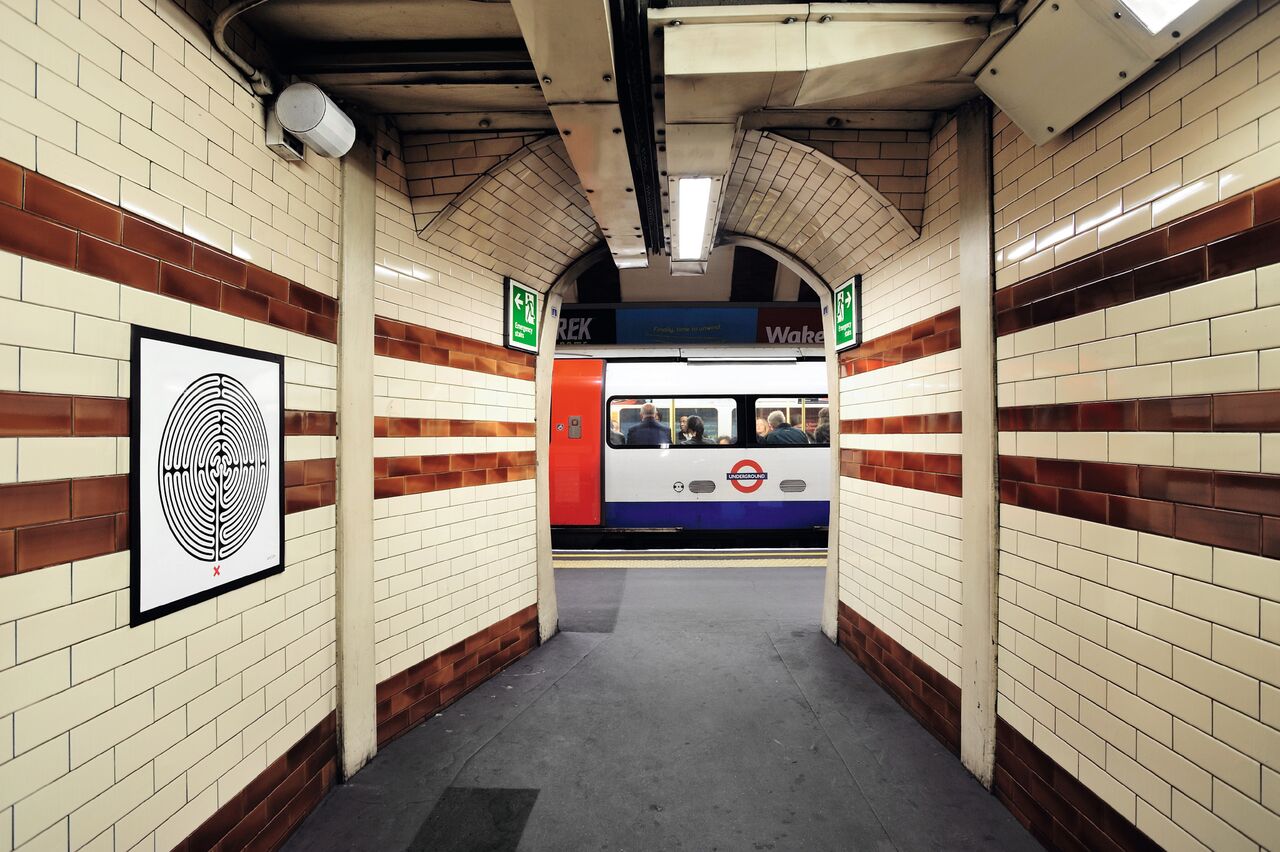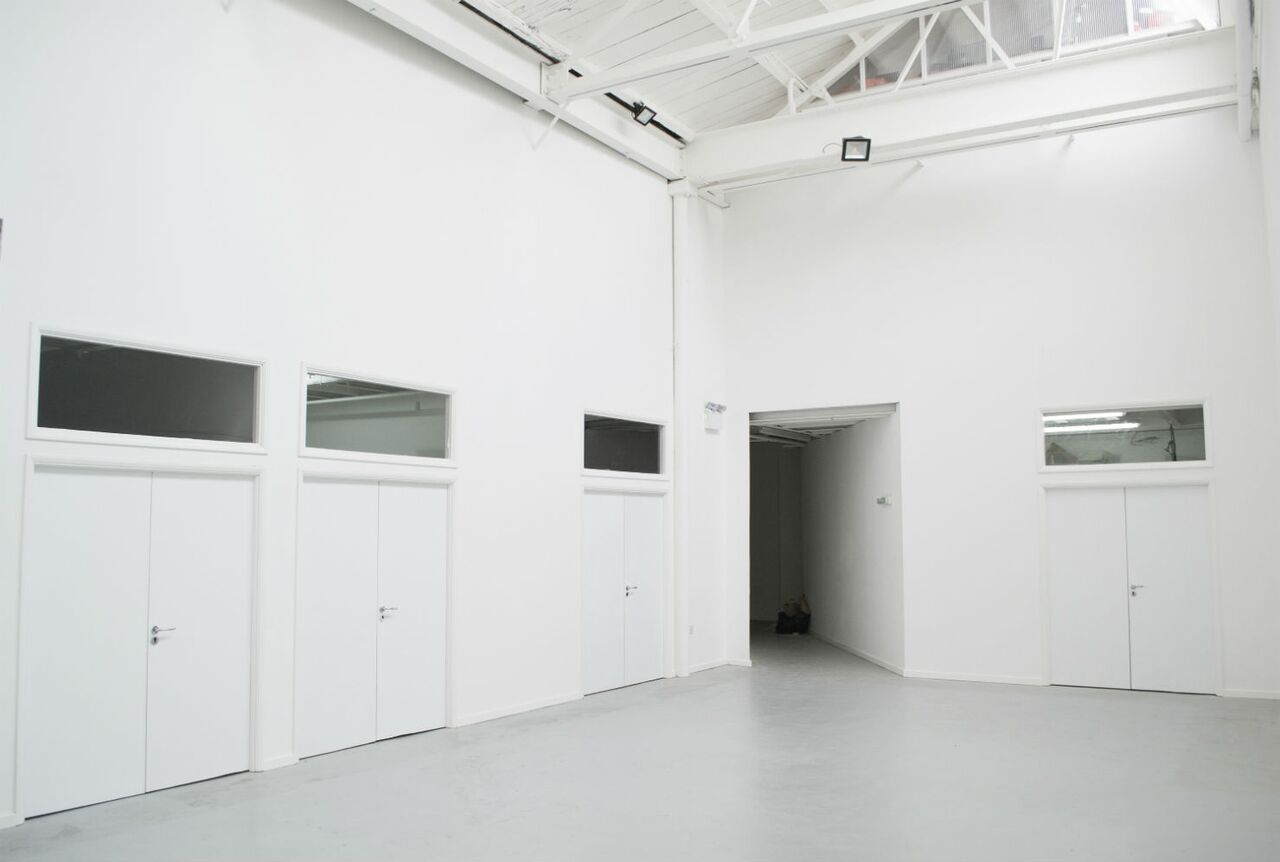Mark Wallinger works from a light-filled studio in a newish arts and cultural space close to Archway roundabout. The Bomb Factory Art Foundation borrowed its name from the historical role it played as a munitions factory in the Second World War.
Writ in Water, commissioned by The National Trust to commemorate the Magna Carta, is Mark Wallinger’s latest work. “The former factory has been used as a venue for creativity in the past,” he says, “and I’m very happy to be part of the foundation.
We share the building with an annexe of Central St. Martin’s School, and it’s great to work among artists and art students in Archway. At The Bomb Factory there’s a year-round programme of life classes, events and exhibitions. Everyone is welcome when the studios are open to the public annually.”
The Bomb Factory houses twenty artists in their own studios. These are centred around a high-ceilinged, all-white space, which multitasks as a gallery, cinema, lecture & workshop space, life drawing studio, events and party spot.
Pallas Citroen, local artist, founder and managing director of the foundation, realised there was a real need for affordable studio space in the Archway area. “We are keen to make the arts accessible to as many people as possible and involve the local and wider community,” she says. “A revolving selection of our artists take the life-drawing classes attended by locals and anyone keen to pick up a paint brush. It’s an inspiring exchange.”

Photo: Ken Adalrd
The most internationally lauded of the studio holders is, of course, Wallinger. Having been nominated twice, he eventually won the Turner Prize in 2007 for his work State Britain. It’s a meticulous recreation of solo eccentric Brian Haw’s peace protest. For five years Brian and his loudhailer were situated directly across from parliament, well within hearing distance for Westminster’s MP’s.
Wallinger’s piece, displayed at Tate Britain, included reconstructions of the tarpaulin shelter, posters, banners, battered dolls and teddies (from well-wishers), faded cards, loudhailer and other protest paraphernalia generated by the activist. The Serious Organised Crime and Police Act was hastily passed by parliament. Haw’s protest was deemed illegal. He was moved on and his protest dismantled. State Britain was commended as a fitting way to highlight a law many believed was designed to curtail people’s right to protest.
Rewind further, and Wallinger is most widely recognised for being the first artist to exhibit on the empty fourth plinth in Trafalgar Square back in 1999. His life-size statue Ecce Homo is a Christ-like figure, complete with a golden crown of barbed wire in place of the traditional thorns. Back in the late nineties the biggest talking points were the (underwhelming) Millennium Dome and the non-event that was the Millennium Bug. “It struck me that it’s the millennium and yet everyone’s rather squeamish about mentioning Christianity,” Wallinger noted at the time.
Ecce Homo took on a more recent second life. It was displayed at the top of the west steps of St Paul’s Cathedral (see pic, above) in Easter 2017 in association with Amnesty International. Its chancellor explained the significance of displaying the figure of a man undergoing trial by a braying mob. “We are provoked into asking who we have become as people and societies,” he said, “and who our victims will always be.”

Photo: Thierry Bal
As an artist, Mark Wallinger is not an easy person to pigeonhole. His works have included the ballet, Undance, at Sadler’s Wells in 2011, a performance piece and video installation where he ran around in a bear costume at the Neue Nationalgalerie in Berlin, the purchase of a racehorse as a piece of art, and Time and Relative Dimension in Space, a stunning mirrored Doctor Who Tardis sculpture.
There are also the 270 individual enamel plaques collectively called Labyrinth, commissioned by Art On The Underground (recognise the Kentish Town one, above?). They were installed in every tube station in the capital to celebrate the 150th anniversary of the Underground.
Many would consider it a stretch to compare somewhere like the Tate Modern on the Southbank to the Bomb Factory in Archway. They do, however, share a similar trajectory that begins with a defunct Victorian industrial building and ends with a shining new arts and cultural centre.
Sure, one of them is on a smaller scale, but both are open and welcoming to an art-interested public. The final word on Archway’s Bomb Factory goes to Wallinger: “The guiding ethos of our foundation is that we become an important part of the local community.”


